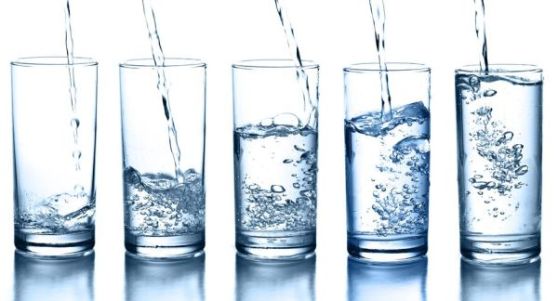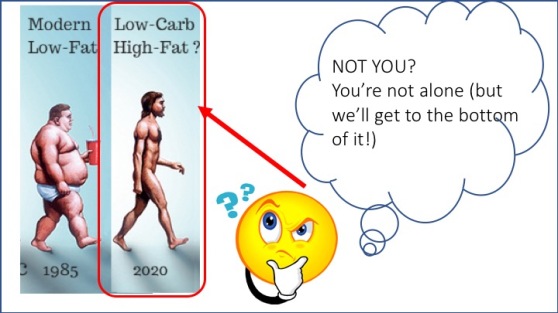Intermittent fasting is an increasingly popular phenomenon among people wishing to improve their body composition and their overall health – almost as much as consuming the latest superfood.
Intermittent fasting (or time restricted eating, as it is known in the scientific literature) is when we restrict our eating during the day to a window of from around 8 hours to 12 hours, and has been popularised by the fitness industry in recent years. There are different ways to approach it, though from a health perspective, eating earlier in the day to allow for the feeding to align with our body’s circadian rhythm may optimise the health benefits for overall longevity. Fasting has been a practice undertaken for centuries in some cultures, and research reports favourable effects on many markers of metabolic health, including blood lipid profile, blood glucose metabolism and hypertension when these populations have been studied. More recently, researchers have investigated different time restricted feeding protocols in relation to risk of cardiovascular disease, neurological disorders, diabetes and some cancers using rodent and human trials. The longer time spent fasting may have pronounced health benefits, though recently a more conservative method (of even an 11 hour fast) has emerged as being beneficial for certain populations. Indeed, time restricted eating is being thought of as an easy to implement, effective lifestyle intervention that could help improve appetite control, markers of overweight, inflammation, blood glucose metabolism and hypertension, all reducing risk of cardiovascular disease, diabetes and some cancers. This recent small study found that late night (or prolonged eating periods) increased fasting glucose, blood triglycerides, insulin and weight gain.
When healthy adults eat meals that are identical in terms of macronutrients (ie carbohydrates, proteins and fats) and caloric load at breakfast, lunch and dinner, the postprandial (ie. after eating) glucose response to the meal is lowest after breakfast and highest after dinner, even though the meal is identical. This is one example which suggests that our metabolism, and response to food, changes across the course of the day (see here). We are diurnal creatures – we do most of our activities during the day (including eating, working, exercising) and we rest at night. This is controlled by our internal clock in the brain, the superchiasmatic nucleus (or SCN) which in turn influences smaller internal clocks (or oscillators) in the peripheral tissues of our body. These clocks control thousands of genes within our body, including those that regulate our metabolic processes, which accounts for around 10% of our entire genome. While light is the major cue for the SCN in our brain, timing of food intake influences the circadian rhythm in the other tissues, including the liver, which has implications for metabolism. This tells us that our basic metabolic physiology is supposed to behave differently according to the time of day – this is everything from making neurotransmitters, to making insulin, to glucose transport inside of cells, to fatty acid oxidation and repairing cellular damage. It makes sense then that when we eat has just as important implications for our health as what we eat. Research investigating the health effects of fasting has found that anything that breaks the fast will break the fasting period, including no calorie options such as black coffee and even herbal teas. This is because there are compounds within these fluids that require breaking down by the liver. That is not to say that people don’t experience benefits from fasting if they consume a hot beverage earlier in the day (as is often recommended to help get through the morning hours and comply with a 16:8 protocol) or limited calories (for example, 50 calories), however longevity benefits may well lie within the strictest definition of fasting.
With the advent of artificial light, and the changing structure of work schedules (combined with the increasing busy-ness of everyday life), this has elongated the period of time that people eat, which has negative health consequences. While you may have heard in media reports of scientific studies that eating late at night makes no difference to overall weight loss, the focus on weight ignores the more important, underlying metabolic and chronic disease risk that eating late into the evening can have on health outcomes. It may be easier to regulate appetite too, as research suggests that appetite hormones respond more favourably to eating earlier (8am to 7pm) than later (noon – 11pm), and the level of satiety achieved with this could prevent overeating. This is relevant with time restricted feeding as research has shown that more frequent eating patterns can be detrimental to metabolic health if consumed close together. One study found that participants who ate excess calories consuming their food over three meals and three snacks had increased visceral (stomach) fat deposition, liver triglycerides and lower liver insulin sensitivity compared to those consuming the same number of calories over three meals. The snacks were consumed later in the day, and after each meal, so elongated the overall eating period.
Animals limited to 9-12 hours feeding period, but not limited in the number of calories they eat have experienced benefits including decreased fat mass, increased lean muscle mass, improved glucose tolerance and blood lipid profile, reduced inflammation, higher volume of mitochondria (the energy powerhouse of our body), protection from fatty liver and obesity, and a more favourable gene expression. In humans, research studies suggest that eating within a time restricted window of 11 hours (say, 7am to 6pm) is associated with a reduction in breast cancer risk and occurrence by as much as 36%. Earlier eating time has resulted in more effective weight loss in overfat people, and every 3 hour increase in fasting duration was linked with 20% reduced odds of having an elevated glycated haemoglobin (HbA1c), a marker of long term blood sugar control. For every 10% increase in calories consumed after 5pm there was a 3% increase in c-reactive protein, a biomarker used to measure inflammation (the underlying process that, when elevated long term, can influence risk of diabetes, cardiovascular disease and some cancers). Finally, when meal times were constructed earlier in the day this resulted in a 10% decrease in c-reactive protein. Eating within a 12-hour window improved sleep and weight loss within an otherwise healthy population. You can see then, the myriad of potential benefits to eating within a time restricted eating – could it be worth trying to fit into your lifestyle? And if so, how to do it?
There are many different time restricted eating protocols to choose from – and the type of fast you choose to do really comes down to what works for you. The 16:8 protocol that seems to be most popular is a little aggressive for anyone new to fasting, and this may ultimately leave you feeling hungry, cranky, and vulnerable to overeating later in the day – undoing any potential health benefit that has been shown in the research. Indeed, many people I see that try this as their first experience report that they can successfully get to 11am or lunchtime without eating, but once they are home from work, no amount of food will keep them full, eating right up until bedtime. My advice is to start a little more conservatively. Given that (in an ideal world), we sleep for 8 hours a night, not eating in the 3 hours leading up to bed time should be a good place to start for most people, thus it gives that 11 hours where some of the health benefits begin to be realised. From there, once adapted, you could try to push it out by an hour. While the most potent benefits occur with the strictest definition of fasting, the blood glucose and lipid improvements, along with fat loss can still occur in those whose definition of fasting refers to calories, not coffee and tea as mentioned above. That the benefits occur in the absence of caloric restriction is important to reiterate, however by restricting the eating period, many people also reduce overall caloric intake, which can further improve overall metabolic health and body composition. Fasting doesn’t appear to be something you must do every day to see the health benefits either, and even 3-4 days a week could be beneficial for metabolic health.
That said, this reduction in calories and extended time NOT eating may not be good for all, especially if your notice increased anxiety, sleeplessness or disruptions in hormone balance, so it is always best to proceed with caution. It would also be prudent for any individual with a health condition to discuss with their health professional before embarking on time restricted eating, especially the more aggressive protocols.
(PS I’ve got dates booked for Nelson, Wellington, Dunedin and Christchurch for my talk! Click here to find out more details, would love to see you 🙂 ).

As with many things, it could be all about timing…







